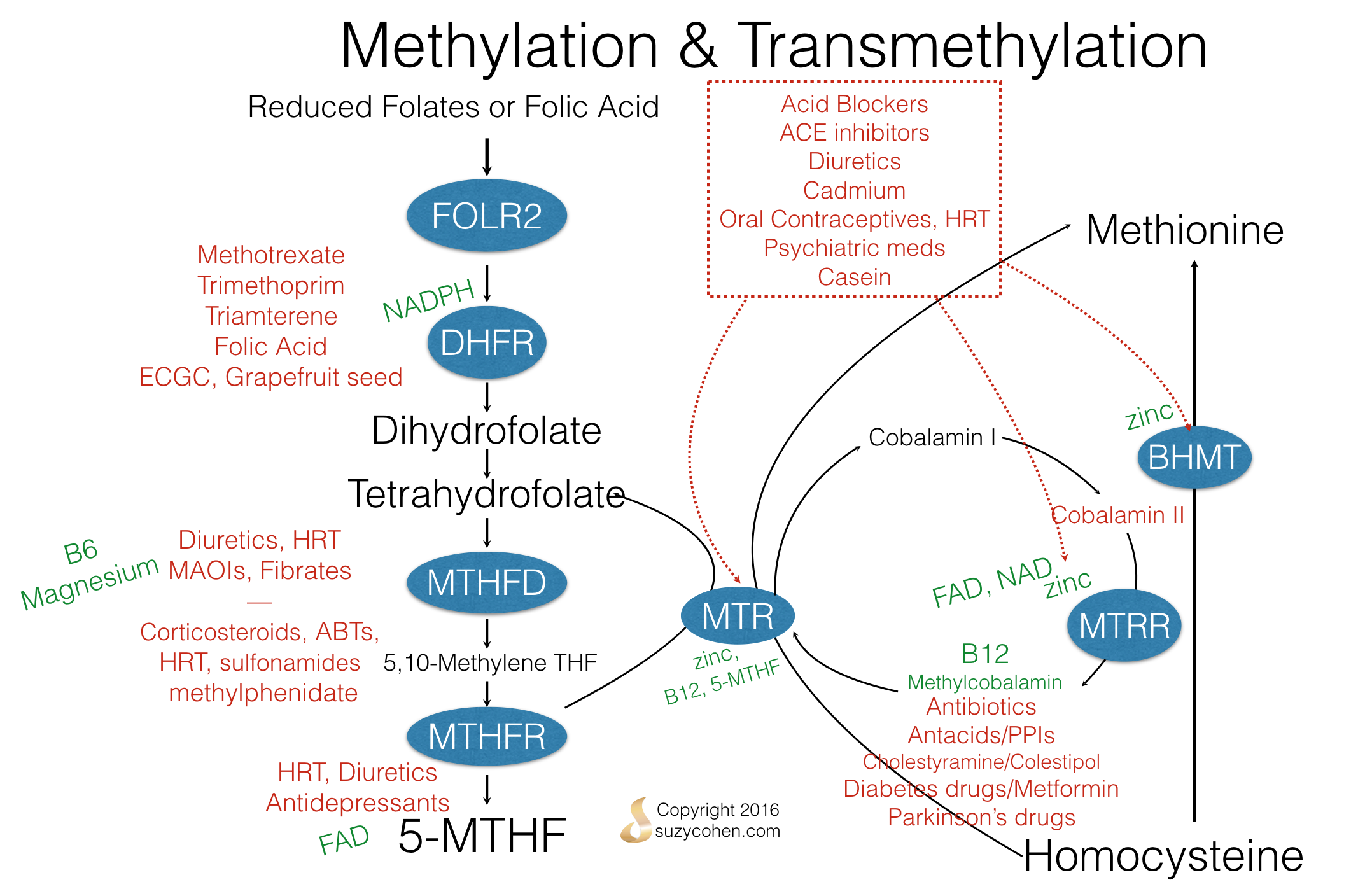What's On This Page?
ToggleA colleague and friend of mine (let’s call him Blake) has a blood homocysteine value of 25 which is very high. Today, I’ll go over the reasons for this and some of the genes that are involved. But it’s not just genes, it’s also about the medications you take, and some of them are the most popular ones on the planet!
Blake takes ibuprofen (which indirectly raises homocysteine), he has a double homozygous PEMT genetic SNP, as well as MTHFR C677T gene SNP, and to add fuel to the fire, he has been eating pretty much all protein, and very little greens/vegetables or salads. This means he is getting a high methionine diet, and methionine makes homocysteine. He has several different variants that are double homozygous SNPs in his CBS gene, and one of them is the first step in breaking down homocysteine in the transsulfuration pathway. So he has trouble converting homocysteine into cystathionine (and so the homocysteine builds up).
Taken together, “Blake” can’t break homocysteine down very well from any direction. It is going up and up. It’s so high that it is irritating his arteries, causing erratic heart palps, insomnia, memory problems, anxiety, and mood swings all the while releasing pro-inflammatory cytokines into his brain and CNS, and causing more pain in his muscles and joints than he should have for being 46. I’m working with him right now to bring this number down because 25 is dangerous.
Homocysteine acts like an excitotoxin, similar to glutamate and MSG. It can attack the brain. He was feeling some of those symptoms as well as cardiac symptoms. Already in seven days, I’ve got him more comfortable with just a few supplements, they are listed for you towards the end of this article.
Ibuprofen and other analgesics can raise homocysteine through the depletion of folate which is needed to recycle homocysteine and turn it back into methionine.
I know, some of you really need these medications and I’m okay with that. I just want you to know that they can raise your homocysteine, so now that you know you can read today’s article and take better care of yourself.
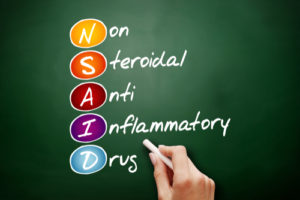
If you are in pain and concerned about taking opiates, or intolerant of their side effects, then you will likely be switched to an NSAID drug such as ibuprofen, naproxen, indomethacin, celecoxib or others. See the graphic I made below listing steroids and NSAIDS, the two most popular categories of medication for pain and inflammation. As you can see, it will list some of the most popular anti-inflammatories that can impact homocysteine.
Homocysteine is an amino acid that is produced in your body as an intermediate in the metabolism of two other amino acids, methionine and cysteine.
I left acetaminophen off this list because it does not impact the heart or homocysteine to the extent of the concern.
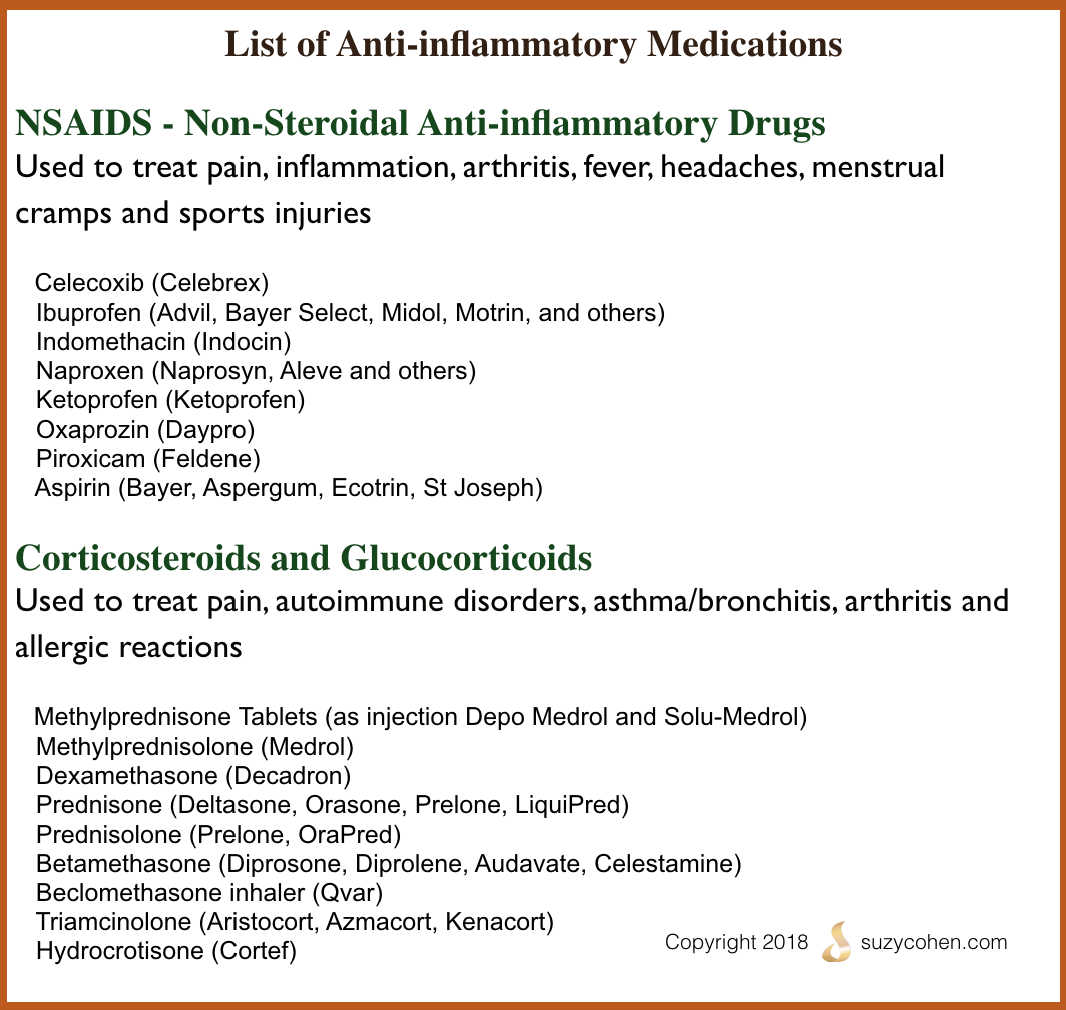
These medications are phenomenal for reducing inflammation and relieving swelling and pain. The trouble is that they are strong drug muggers of folate, your natural vitamin B9 nutrient. That in and of itself is enough for you to consider supplementing with natural folate (which is not the same as folic acid). To understand the difference between those too, CLICK HERE to read Methylation Problems Lead to 100s of Diseases.
The trouble with taking these NSAID medications every day for pain and FAILING TO SUPPLEMENT with methylated high-quality B vitamins is important for you to understand. I’ll list the potentials as they come to mind:
1. A folate deficiency compromises your ability to repair DNA, which can raise your risk for cancer.
2. A folate or B6 deficiency can increase neuropathy making you super uncomfortable in your own skin. Tingling, pins and needles, ant-bite sensation, hot water sensations and more can cause you mental and physical pain that is sometimes unimaginable. CLICK HERE to read my article, Akathisias Make You Want to Jump Out of Your Skin.
3. A long-term deficiency of folate creates what I call a “Medication Induced SNP” in your methylation pathway. So you may not have the gene SNP for a methylation problem, but I’m saying the drugs give you the same effect and block methylation by inducing a blockage where there wasn’t one! This is explained in greater detail in my other article called, Genes, Methylation and Your Health.
It’s also easy to visualize if you have my Pathways on a Keyring which is one of my physician’s best resources …but you can buy it too if you’d like. CLICK HERE to learn more about it.
4. Painkillers in the NSAID category are known to negatively impact cardiovascular function, especially in middle-aged to older folks. This is in part due to the increase in homocysteine, which is due to the folate deficiency. You need adequate amounts of folate to break down homocysteine, and the drug mugging (nutrient depletion) of folate causes a build-up in homocysteine which should be perceived as “acid” on your heart, blood vessels, and brain.
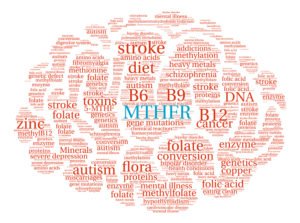
5. A build-up of homocysteine, secondary to these medications can cause more sulfur in your gut than you’d like. It will affect your digestion! Homocysteine is a sulfur-based compound, and in high amounts like above 12 or 15, it’s dangerous. Higher amounts are toxic. I know a patient whose level is 25 which is the result of chronic ibuprofen use, combined with a methylation SNP, and it causes him to burp about 100 times a day. It’s called “sulfur burp” and you can read about it lower down in my article.
6. Homocysteine is toxic to your brain, it’s not just about heart disease. I want that point made very clear. Homocysteine is a dangerous poison to your brain and no amount of folic acid fixes it.
In fact, folic acid, the synthetic form of folate can occupy the receptors on your cells, and cause LESS of the real deal (folate) to get on the cell receptor, and then into the cell.
7. Homocysteine is a stunt-double for glutamate, which is an excitotoxin. You might think of MSG in the same way as you do glutamate. It’s a condiment hidden in many foods, you can CLICK HERE for my article on that.
Just like MSG, free glutamate, high-glutamine-based whey/protein supplements and homocysteine, it’s ALL bad for the brain, okay. BAD! And like I said, homocysteine is a stunt-double (the medical term for metabotropic glutamate receptor agonist) but you can just imagine that all the bad things that occur from glutamate ALSO sadly occur from homocysteine.
In other words, symptoms like the following are from elevated homocysteine…
Anxiety or phobias, panic attacks
Insomnia
Brain fog
Brain zaps
Hypnic jerks
Migraines (CLICK HERE to read my article on “migrenades”)
Muscle twitching or benign fasciculations
Hyperalgesia (increased pain)
ADHD or focus problems
Bone pain
More!
This Next Part is Important!
These symptoms correlate with high glutamate and I’m saying that high homocysteine can do the same because it fits the receptor that glutamate does, and it launches the same issues that glutamate does. What does this mean exactly? For one, if you are doing everything possible to reduce glutamine intake, and glutamate damage to your brain (or increasing GABA), I’m here to tell you that none of that matters if -and only if- homocysteine is elevated. It’s acting like glutamate!
Controlling glutamine intake (and MSG intake) is helpful of course, but the root cause of the neurological problem may be homocysteine, and until you reduce that, very little else will help you.
Stupid Statements About Homocysteine and Methylation
Few things annoy me more than reading statements on other blogs or in the newspaper that are inaccurate or false. For example, these are things I want to clear up for you:
“Eating cereals that are fortified with folic acid, and to a lesser extent vitamins B6 and B12, can lower blood homocysteine levels.”
My comment: Wrong, folic acid doesn’t lower blood homocysteine. That won’t work as well as better forms of folate, for example Methylfolate or 5-MTHF, or folinic acid.
“An elevated blood level of vitamin B12 or folic acid means you should stop taking supplements.”
My comment: While true you may want to stop supplementing, the reason may not be due to the elevated blood levels. That’s just your cue to know that something is wrong enzymatically. It may actually mean a cellular deficiency of these nutrients because they’re building up outside the cell (in the blood), due to an enzyme deficiency that converts and clears them. It’s hard to know one way or the other, just realize that an elevated blood level is not necessarily indicative of what’s happening inside your cell.
Meat-thionine and Methionine
“If you have high homocysteine, you should stop eating homocysteine-rich foods immediately.”
My comment: So I read that in a health journal, and it was written by a practitioner who should know better. There’s no such thing as homocysteine-rich foods, it’s actually methionine. The amino acid methionine occurs in many foods but is probably highest in meats like steak, chicken, and fish.
To help you remember, think of methionine as “meat-thionine” and keep it to a minimum.
Think of folate as foilage, and then you’ll know what makes you better.
To get well and reduce homocysteine, you want more foliage and less meat which means:
Less meat-thionine and more foliage!
(That’s code for Less methionine and more folate!)
Milk and eggs have less methionine than chicken and fish but they are still high in methionine. Parmesan and other aged cheeses are very high in methionine too! Be careful with those, they could set you back for weeks and lead to panic attacks, migraines, and anxiety. It’s very high in free glutamine too, which forms glutamate in the body.
Bodybuilders and gym rats who supplement with some of those protein shakes that contain high amounts of methionine and glutamine are really putting themselves at risk for the excitatory effects of these compounds, as well as high homocysteine. This is because when you eat methionine-rich foods (which are mainly animal protein), your body converts the methionine into homocysteine.
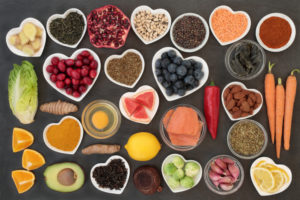
A diet low in methionine has the incredible side benefit of starving off some cancer cells too. The foods you want to eat would include fruits, vegetables, nuts, beans, and grains (if you eat them). Those are lower in methionine.
Be careful not to misinterpret my point here. Methionine is an essential amino acid that we need for the healthy formation of cartilage and may also help with hair and nails, however, there’s a super fine line between normal healthy amounts and too much! We, as a nation, err on TOO MUCH and that should be common sense to you based upon the protein-rich diet we consume.
Sulfur Burp
Sulfur burps happen when hydrogen sulfide gas forms as a result of sulfur-reducing bacteria in your stomach. But the question could then be asked, what is creating all the sulfur in your gut? It’s from proteins in your gut that are sulfur-based, such as:
- Homocysteine
- Taurine
- Cysteine
- Methionine
As these proteins get broken down inside your digestive tract, sulfur-reducing micro-organisms, release a gas called hydrogen sulfide which makes you burp with an aroma of rotten eggs! It could make you burp an awful lot, so reducing the intake of some of these proteins will be helpful.
The belching in this particular case is not related to a poor diet, it could actually be from the dangerously high levels of homocysteine (a sulfur-based compound) and the gas has to come out somehow. So the higher the homocysteine, the more sulfur you make.
There are two pathogens that could also be responsible for sulfur burps and those include the ulcer bug, H. pylori as well as the parasite, Giardia lamblia.
TMG or Trimethylglycine
The way to beat this is to break down the homocysteine, and you can do that easily with a vitamin-like substance called “Anhydrous Betaine” which also goes by “oxyneurine” and more commonly by the name trimethylglycine. I’ve bold-faced the “methyl” part of the name for a reason which I’ll get to momentarily. Supplements of trimethylglycine are abbreviated on the label as TMG, and that’s how I’ll refer to it from now on.
TMG is a dietary supplement that is like a vitamin, and it comes from sugar beets. It works as an antioxidant and anti-inflammatory; it functions as an energy booster, but more than anything it’s a METHYL DONOR. Remember, TMG’s other name is triMETHYLglycine as well as “Anhydrous Betaine.” This supplement is not the same as Betaine HCL, however. Betaine HCL (hydrochloride) is a digestive acid used for heartburn. TMG is used as a methyl donor, and for the purpose of reducing homocysteine.
They are not interchangeable.
TMG donates methyl groups.
Betaine HCL is a digestive acid.
Make sure when shopping, you choose the right one. Store clerks may (or may not know this) and may lead you to Betaine HCL when you ask for Trimethylglycine, but again they are not the same.
TMG increases your body’s natural production of SAMe or S-adenosyl methionine which may help some people with mild joint pain and mild depression. TMG could be extraordinarily helpful for fatty liver, which is common in people who are overweight or obese.
CAUTION: I have to say this. Be careful with supplements and do not take my information and assume a supplement is right for you, because it may not be. I’m just trying to educate people, and I’m talking to millions of you at a time because I have global readership, so always ask your doctor what’s right for you.
Homocysteine becomes elevated for several reasons, and most frequently occurs when there is not enough trimethylglycine or methylfolate (the biologically active form of folate) to donate enough methyl groups to break down the homocysteine during the remethylation pathway and turn it back into methionine. It’s considered a minor pathway in terms of breaking down homocysteine (compared to folate, B6, and B12) but I think it’s important (and helpful if your homocysteine is really high, like greater than 15).
SOURCES OF TMG
- Plenty of TMG is made in a healthy body.
- Some can also be obtained from the diet, like from eating broccoli, beetroot, shellfish, wheat bran, wheat germ, spinach, quinoa, and more.
- One can take it as a dietary supplement.
TMG helps convert homocysteine to methionine. TMG supplement is sold in some (not all) health food stores, and it’s also easy to find online. Here are a few products to shop on Amazon if you want to try these brands which I have already vetted for you:
1. TMG 500mg Liquid Vegetarian Capsules by Life Extension
2. TMG Crystals by Jarrow (it’s a tasteless powder, with no other ingredients)
3. TMG Anhydrous Betaine – 120 Capsules by NutraBio (I like that there are no fillers/excipients)
TMG supplements directly reduce homocysteine, unlike this digestive acid. You just follow the directions on the label for the supplement you take. You take before capsule with a meal, or shortly before you eat, and if you don’t get heartburn or reflux right after, you try taking two capsules with a meal. And so forth. Controlling the homocysteine and reducing it is also key to stopping the sulfur burp. Betaine is well-documented to help with heartburn and reflux too.
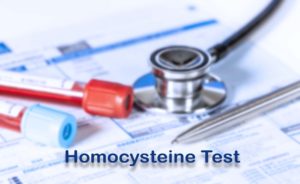
Methylation or Transmethylation
If you have a problem with methylation, the key biomarker that confirms it is your homocysteine test (a blood test), and you can consider it an inflammatory biomarker in your blood. If it’s either high or low, homocysteine actually reflects a problem in this methylation pathway. I made this graphic a few years ago, see below. The medications in red color are what BLOCK the pathway and create a Medication Induced SNP. This information is what is part of the Pathways on a KeyRing SNP Booklet I made. CLICK HERE to see that resource, especially if you’re a practitioner. (It also has the transsulfuration pathway, not shown here).
Pathways for both Methylation and Transmethylation – The drugs in ‘red color’ are what block it!
The Plan to Reduce Homocysteine Quickly
There’s a lot to unpack here. First and foremost, eat less meat and protein (because it’s high in methionine and that makes homocysteine in your body). So the FIRST and most important thing you can do to lower homocysteine is to reduce the protein (animal/meats) because again, they are HIGH in methionine which forms homocysteine.
Start eating green foods like vegetables and salads.
There are also some essential nutrients that you should consider when lowering homocysteine and I’ve put together a quick 9 step plan just off the top of my head. I did not include dosages here for a reason. I couldn’t possibly know how much YOU need compared to someone else. Every person is different, and requires a little bit more of this, and a little less of that. Some of you will need B6 and folate, other will need TMG and folate and methylcobalamin, and so on and so forth.
You don’t necessarily need all 9 of these things, in fact, I would not recommend it! But at least consider the 9 following steps and see if they’re right for you:
1. Eat Greens
Greens are very high in folate (vitamin B9) which drives the methylation pathway, along with other B vitamins. Meats are high in amino acids that RAISE homocysteine, so you want the side dish to be the meat (if anything) and you want the main dish to be the veggies. Eat like a rabbit.
A diet rich in natural folate, such as foilage-based foods. Like salads, spinach, chard, greens, asparagus, kale, and broccoli. Lightly cook or saute the goitrogenic ones. If you’d like to learn more about goitrogens, CLICK HERE to read, The Case Against Kale.
2. Eat Beets
This provides natural betaine which directly reduces homocysteine. You can boil beets and put them on your salad which has folate in it. A beet salad would be awesome for homocysteine! For more on beets, and how they provide betaine, help reduce blood pressure, joint pain and more, CLICK HERE and take 10 minutes to read this awesome article, Beet Someone You Love.
2a. Betaine
This is similar to #2 above. Higher intakes of anhyrous betaine in the form of TMG (trimethylglycine) NOT Betaine HCL should help reduce circulating homocysteine concentrations. These were listed above, but for convenience, I’ll re-list them for you.
1. TMG 500mg Liquid Vegetarian Capsules by Life Extension
2. TMG Crystals by Jarrow (it’s a tasteless powder, with no other ingredients)
3. TMG Anhydrous Betaine – 120 Capsules by NutraBio (I like that there’s no fillers/excipients)
3. Vitamin B6 as P5P
This is needed to drive the methylation pathway and clear homocysteine. This is a little harder to find, but certainly possible. I put 10mg of P5P in Mito B Complex. You don’t need as much P5P as you would plain B6 because P5P is the biologically active form of B6 and goes right into your cells. It’s body-ready! So in terms of dosage, I’d go for something like 10 to 25 or 30mg of this, not 50mg right at first because that might be too much. Depending on what brand you’re taking, you might need to dump out half of the capsule, or more. Slow and steady wins the race.
4. Vitamin B12 as Methylcobalamin
This nutrient is made by probiotics in your gut, but you can and likely should supplement with natural B12. You need the methylated form of it though, so you’re looking for methylcobalamin. There are many brands of this sold nationwide. It’s also in my Mito B Complex.
5. Riboflavin 5 Phosphate
This is the biologically active form of riboflavin, and it’s needed to help clear homocysteine. There was a STUDY that suggests that riboflavin status (more specifically, riboflavin deficiency) could hinder your homocysteine breakdown, but only in a small segment of the population who have both low folate status and are homozygotes for the MTHFR C677T polymorphism (or SNP as I call it). It’s pronounced “snip.”
The MTHFR enzyme catalyzes (drives) the production of of 5-methyltetrahydrofolate, also called (and sold as a supplement) MTHF or 5-MTHF. The primary purpose of this compound is to participate as a methyl donor for remethylation of homocysteine to methionine. In other words, 5-MTHF breaks down homocysteine.
So the fewer greens you eat, the more likely this genetic SNP will express itself. Because MTHFR contains flavin adenine dinucleotide (FAD) as part of it’s constitution and FAD is the biologically active form of riboflavin, your B2 (riboflavin) status influences homocysteine metabolism.
6. Choline
Choline forms trimethylglycine (TMG) very well in rats, and to some extent in humans. As you’ve just learned, TMG is involved in the direct break down of homocysteine. The need for choline is probably increased during pregnancy. Of the two, I’d say TMG is stronger, but some experts feel choline is just as important as folate becuase it provides methyl groups and participates in homocysteine metabolism. My colleage had a homocysteine level of 25, which is dangeously high and part of the reason was his PEMT gene SNP which reduces his choline.
There was a STUDY published in the American Journal of Clinical Nutrition, and the results showed how important choline can be. Two hours after a methionine load (insert chicken, fish or some other high protein meal that is rich in methionine), the researchers noticed that the choline-deficient mice had plasma homocysteine concentrations twice those of choline-fed mice. Keep in mind, you’re choline deficient if your PEMT gene is homozygous and expressing. As I mentioned, my colleague and friend Blake had a PEMT gene SNP that I believe was expressing, and he was deficient in choline putting hiim at risk for higher homocysteine after every protein-rich meal!
According to this study, four hours after the methionine load, clinically choline-depleted men showed plasma homocysteine concentrations that were dramatically higher… 35% higher than those in men were not choline depleted. So choline can be very important to reducing homocysteine, especially in people with a PEMT gene SNP. Too much choline can lead to diarrhea, stomach upset, sweating and body odor (from a breakd down substance called trimethylamine).
7. Zinc
Zinc is required for two different enzymes that are needed to process homocysteine during methylation. the two enzymes that are needed (and utilize zinc) are Methionine Synthase (MS) and Betaine-Homocysteine MethylTransferase (BHMT). I don’t think zinc is needed in high doses, people tend to overdo the zinc. I suspect something like 5 to 20mg per day might be a good range, but I’ve seen people taking much higher doses than that, and I don’t recommend it because it’s easy to overdo the zinc and tilt all your other minerals out of whack.
Zinc (along with B6) is required to drive the transsulfuration pathway which is a pathway that breaks down homocysteine and ultimately turns it into glutathione. There was a STUDY on animals which showed that rats fed lower zinc had reduced expression of the two enzymes above (MS and BHMT) and therefore had higher homocysteine. Most of you concerned about methylation focus heavily on folate, and ignore zinc. Here’s a graphic I made to show you how easily zinc is depleted from our bodies. 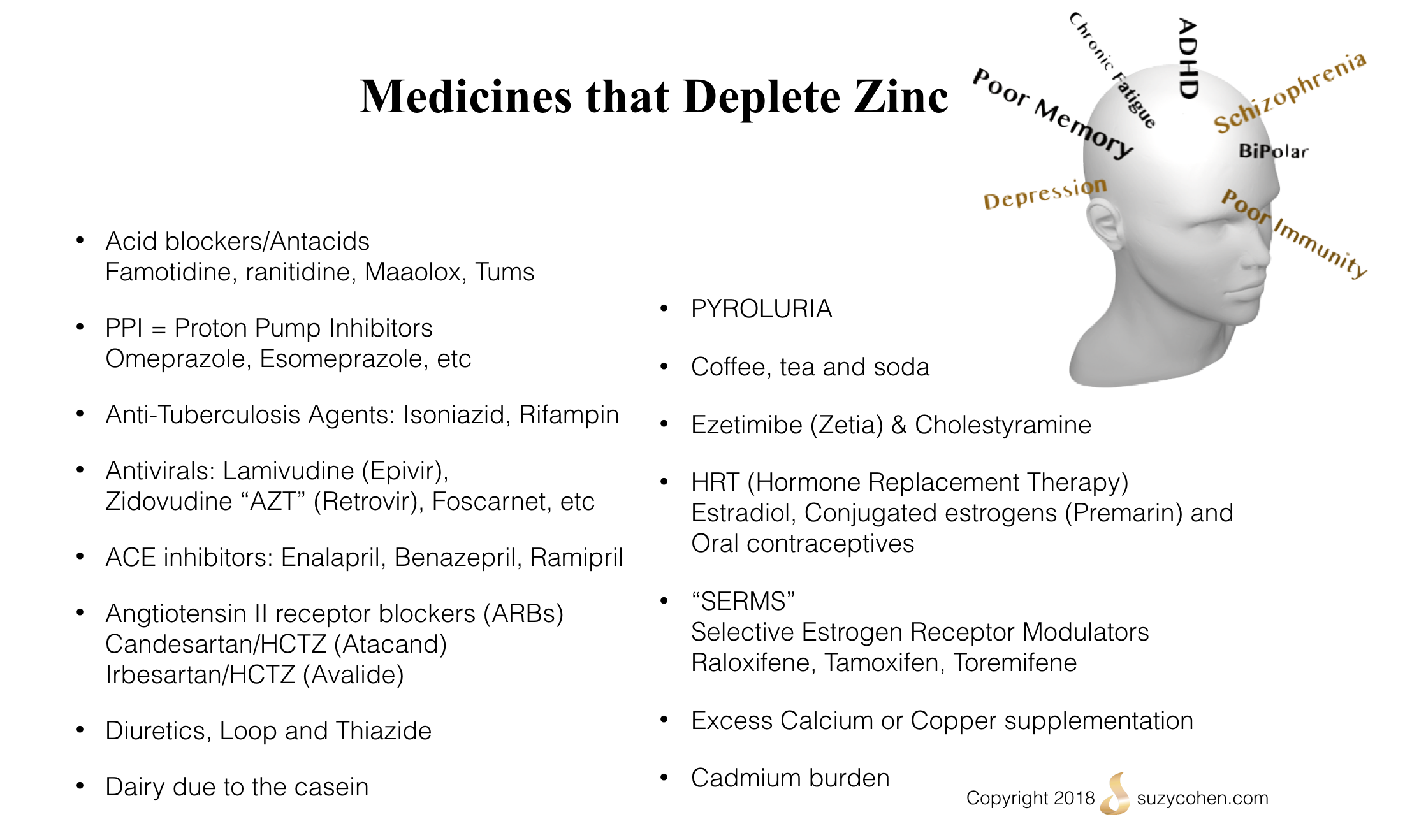
8. Folate
This is not the same as folic acid, which is synthetic. Folate, 5-MTHF or folinic acid might be very helpful in clearing out homocysteine. That’s their ultimate job but these compounds are not the same thing. Folinic acid is better for healthy DNA formation and methylfolate (5-MTHF) is better for healthy methylation. Folinic acid may lower glutamate because it’s polyglutamated, so some experts say it can reduce the excitotoxic effects of harmful glutamate. I think 5-MTHF or folinic acid are good choices, and definitely not folic acid, which is sold in 99% of dietary supplements out there. There’s no point to you taking that, it might exacerbate your problems.
As a side note, folinic acid is administered in some clinical settings in an effort to diminish the severity or incidence of bone marrow suppression (aka myelotoxicity), such as that which might be experienced from multiple myeloma, methotrexate usage, or other disorders. In a recent study from the Journal of Orthopaedics, they found that fish oil was just as effective as folinic acid supplementation in the treatment of methotrexate induced bone marrow suppression. Basically fish oils and folinic acid supplements are helpful at preserving bone, so you can ask your doctor about those natural remedies if you deal with that.
9. Magnesium
If you have a magnesium (mag) deficiency, the B vitamins will not really work to reduce homocysteine that well. So maintaining healthy levels of magnesium are critical. Magnesium is not created equal, some salts don’t even get past your gut and into your bloodstream, they just go right through you. Coffee depletes magnesium so if you’re java junkie, you’re probably a tad low in mag.
On that note, CLICK HERE to read this article on magnesium, Your Brain Loves Magnesium Threonate.
In case you didn’t know this, magnesium is depleted by over 300 drugs, as well as compounds found in black tea and coffee. If you have an interest in drug nutrient depletion, please take a look at my best-selling book Drug Muggers: Which Medications are Robbing Your Body of Essential Nutrients and How to Restore Them.
Last week, I received so many comments and thank you’s for the healing quote I posted, and so this week I’ve decided to do the same. Today’s quote was chosen, because I truly, truly understand that your path to healing is NOT a straight line, especially when it comes to complex problems. As in the case of methylation, homocysteine, heart disease, and all the things we’ve been talking about today it can be a zig zag maze of hell. So if the plan of treatment you are currently on hasn’t worked well for you, here’s a new way to reframe what’s happening to you, and to give you some more motivation to keep searching and trying new treatments. Be proactive, and move on if you need to, because you deserve good health. Healing can be yours. You just might have to choose another plan if Plan A doesn’t work. I wish you well 🙂


Suzy Cohen, has been a licensed pharmacist for over 30 years and believes the best approach to chronic illness is a combination of natural medicine and conventional. She founded her own dietary supplement company specializing in custom-formulas, some of which have patents. With a special focus on functional medicine, thyroid health and drug nutrient depletion, Suzy is the author of several related books including Thyroid Healthy, Drug Muggers, Diabetes Without Drugs, and a nationally syndicated column.
